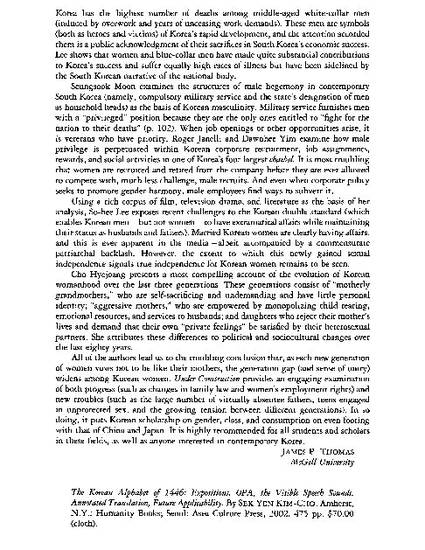
Article
Review of The Korean Alphabet of 1446 by Sek Yen Kim-Cho and The Korean Alphabet by Young-Key Kim-Renaud
The Journal of Asian Studies
(2003)
Abstract
Perhaps the most noteworthy product of Korean civilization, han'gŭl is a source of pride among Koreans: not only does it embody a sense of national uniqueness, but it is also a valuable tool against illiteracy. While this great cultural achievement has merited considerable attention in Korea, detailed English-language accounts of han'gŭl are scarce. Most prominent among this small body of work is Gari Ledyard's 1966 dissertation, "The Korean Language Reform of 1446," since republished (with modest revisions) in 1998. Two recent volumes about the Korean script are now looking to claim space alongside Ledyard's text: The Korean Alphabet of 1446, by Sek Yen Kim-Cho, and The Korean Alphabet, edited by Young-Key Kim-Renaud. Although both books seek to further our understanding of what makes han'gŭl unique, only Kim-Renaud's edition merits the attention of serious Korean language scholars; Kim-Cho's contribution, in contrast, falls short what one would expect of a sound academic inquiry.
Disciplines
Publication Date
May, 2003
DOI
10.2307/3096299
Citation Information
Silva, David & Yen Kim-Cho, Sek & Kim-Renaud, Young-Key. (2003). The Korean Alphabet of 1446: Expositions, OPA, the Visible Speech Sounds, Annotated Translation, Future Applicability. The Journal of Asian Studies. 62. 640. 10.2307/3096299.
